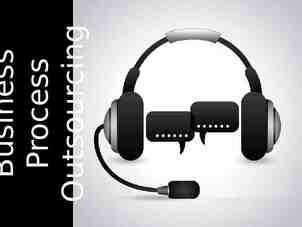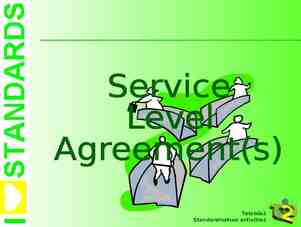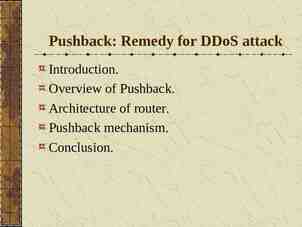At Risk Students and Teaching Strategies for Cognitive Learning
25 Slides116.00 KB
At Risk Students and Teaching Strategies for Cognitive Learning
Table Of Contents Slide 1 Title Page Slide 2 Table of Contents Slide 3 Focus Questions Slide 4 Statistics Slides 5-8 Introduction Slides 9-21 Strategies and Methodologies Slides 22-23 Summary Slide 24 Conclusion Slide 25 References
Questions for Thought Do you remember classmates in school that never seemed to complete in class assignments or do their homework? Do you remember classmates in school who did poorly in most of their classes and rarely participated in extracurricular activities? How many of those students actually graduated from high school? (Ormrod, 2006)
The National Center for Education Statistics Drop Out Rates (1999) 25.3% Hispanic 13.4% black 7.6% White (Johannessen, 2004, pg. 638 )
Who are at risk? “Students who have a high probability of failing to acquire minimal academic skills necessary for success in the adult world.” (Ormrod, 2006, pg. 129)
At Risk Students Approximately 12 million students in the largest urban school districts are labeled at risk. Schools and teachers have been defining a majority of their students as unable to educate. ( Haberman, 1995) These facts define the necessity of teaching teachers how to teach the unteachable. The essence of this presentation.
Labels of Students Least Likely To Succeed Struggling Students Reluctant Students At Risk Students Disadvantaged Students Alienated Students Resistant Students Educationally Deprived (Johannessen, 2003, pg.6)
Characteristics of Students At Risk Low socioeconomic status families Minority ethnic groups Linguistic minority background History of academic failure Older in age than classmates Emotional and behavior problems Lack of psychological attachment to school List your most at-risk students---these are the ones we want YOU to focus on—the ones who need YOUR help the most! (Ormrod, 2006)
Teachers Encouraging At Risk Students Make the curriculum relevant to student to students’ lives and needs Use students’ strengths to promote high self-esteem Communicate high expectations for students’ performance Encourage and facilitate school involvement and extracurricular activities How can you do this with the students you listed? (Ormrod, 2006)
Teachers Promote Self-Determination in At Risk Students Strategies: Present rules and instructions in an informational rather than controlling manner Give students opportunities to make choices (individually or as a group) Evaluate students’ performance in a noncontrolling manner Use extrinsic reinforcers selectively (Ormrod, 2006)
Teachers Promote Self-Efficacy in At Risk Students Strategies: Teach basic skills Use effort and achievement rubrics Assure students they can be successful Promote mastery or challenging tasks ( Marzano, Pickering, and Pollock, 2001)
How do teachers know if at risk students are learning? permanent changes in behavior as a result of life experiences permanent changes in mental representations or associations as a result of life experiences (Both definitions describes learning as a permanent change due to experiences) (Ormrod, 2004) Student characteristics and instruction determines learning outcomes. (NASSP, 1979)
Teachers Make Learning Meaningful for At Risk Students Student-directed instruction promotes prior knowledge activation Meaningful learning occurs only when students can relate new information to prior knowledge Meaningful learning facilitates both storage and retrieval of information Discuss with your table—how can YOU make learning meaningful to students? Think of the students you wrote down that YOU will focus on . (Ormrod, 2004)
Transfer and Problem Solving Strategies for At Risk Students Allow students many opportunities for practice and learning Use scaffolding for complex tasks Implement authentic activities: Assignments must require prior knowledge Create activities that promote HOTS Convey high performance expectations GIVE EXAMPLES OF EACH AT YOUR TABLE (Ormrod, 2004)
Teachers Can Motivate At Risk Students Intrinsic (internal) motivation has more advantages than extrinsic (external) motivation. Intrinsically motivate students by Creating meaningful lessons Promoting authentic engagement Encouraging students’ success Promoting pleasure and enjoyment DISCUSS AT YOUR TABLE—HOW DO YOU DO THIS?
Needs Deficiencies in At Risk Students Maslow’s Hierarchy of Needs Physiological Needs Safety Needs Love and Belongingness Needs Esteem Needs Need for self-actualization (Ormrod, 2004)
Teachers Can Satisfy Non-Academic Needs of At Risk Students Help low income families apply for free lunch Create an orderly and predictable environment Acknowledge students’ special occasions Listen to students’ ideas Acknowledge students’ accomplishments Assess students’ based on individual achievement and not in comparison to peers (Ormrod, 2004)
At Risk Students Need Goals Goal setting influences motivation Goals influence choices and consequences that are reinforcing Goals effect the extent that students become cognitively engaged Avoidance Goals vs. Mastery Goals (Ormrod, 2004)
Benefits of Goal Setting Goal attainment results in considerable selfsatisfaction, greater self-efficacy, and higher standards for future performances. Goals are beneficial only to the extent that they are accomplishable. Setting goals is an important part of selfregulated behavior and learning. How does goal setting relate to motivation? When have YOU set a goal and how did it motivate YOU?
Teachers Can Motivate Goal Setting in At Risk Students Communicate high student expectations Establish routines Positive feedback Encourage individual mastery goal setting Relate failures to controllable external factors or unstable and controllable internal factors Relate successes to stable and unstable internal factors Are these motivators for students? (Ormrod, 2004)
Teachers Foster Positive Attributions of At Risk Students Teachers communicate their attributions for learners’ performances directly through statements and indirectly through emotional reactions. (I knew you could do it!) Teachers evaluate students on the basis of mastery and not one another. Teachers should encourage students to take on challenges and risks Classroom activities should be noncompetitive List ideas for working with at-risk students academically in your classroom---try to focus on the students you listed earlier. (Ormrod, 2004)
Teachers Promote Learning in At Risk Students Teachers must believe that they themselves have some control over students’ learning and achievement. By using instructional strategies that promote long-term memory storage, by scaffolding challenging tasks, and promoting HOTS they can genuinely help students master school subject matter. Teachers must believe that all students can learn.
Cognitive Learning Theory The ability to reason depends on a number of factors. “Today, there is a demand for men and women who can think, reason, and use their minds well.” (Schlechty, 2002, pg. 94)
Conclusion The cognitive approach to teaching and learning focuses on complex, meaningful questions and problems that make connections with students’ life experiences and cultures. Students who are at risk for academic failure are a diverse group of individuals with a diverse set of needs, and so there is probably no single strategy that can keep all of them in school until graduation. However, a combination of strategies can help many at risk students succeed and stay in school. (Ormrod, 2006)
References Haberman, Martin. (1995). Star Teachers of Children in Poverty. Indiana: Kappa Delta Pi Publishers. Johannessen, Larry. (September/October, 2003). Achieving success for the “resistant” student. Clearing House, 77(1), p. 6-13. Johannessen, Larry. (May, 2004). Helping “struggling” students achieve success. Journal of Adolescent & Adult Literacy, 47(8), p. 638-647. Marzano, Robert, Pickering, D., Pollock Jane. (2001). Classroom Instruction That Works. Virginia: McRel. Ormrod, Jeanne. (2004). Human Learning. New Jersey: Pearson Education, Inc. Ormrod, Jeanne. (2006). Educational Psychology Developing Learners. New Jersey: Pearson Education, Inc. Secondary School Principals. (1979). Student Learning Styles. Virginia: National Association of Secondary School Principals (NASSP). Schlechty, Phillip C. (2002). Working On The Work: An Action Plan For Teachers, Principals, and Superintendents. California: Jossey-Bass Publishers.






























